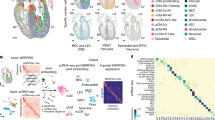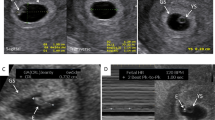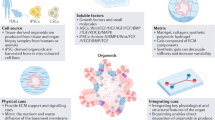Abstract
In vitro treatment of mouse eggs with hyaluronidase can activate them to develop parthenogenetically as well as denuding them of cumulus cells1–4. Activation and subsequent behaviour of the eggs depend on certain defined conditions. Szollosi5 observed morphological changes in unfertilized mouse eggs in vivo after approximately 14 h in the oviduct. Rotation and migration of the spindle towards the centre of the egg was the first and most obvious change. This prepares the egg for equal cleavage rather than the usual unequal division which results in the formation of the second polar body. Graham3 stimulated eggs 12–17 h after ovulation and obtained about 30% “immediate cleavage”6 in the activated group, whereas Tarkowski7,8 applied an electric shock to the exposed oviduct 2–4 h after ovulation and obtained activation in approximately 50% but a very low incidence of immediate cleavage. This suggested that the time of activation after ovulation might be important in the type of parthenogenones induced. Eggs were considered to have undergone immediate cleavage only if, at the time of examination, they were morphologically indistinguishable from a normal fertilized two-cell egg—that is, apart from the absence of a second polar body. They resulted from a biochemical or experimental stimulus other than that provided by fertilization. The few eggs with unequal blastomeres were therefore not included in this group.
This is a preview of subscription content, access via your institution
Access options
Subscribe to this journal
Receive 51 print issues and online access
$199.00 per year
only $3.90 per issue
Buy this article
- Purchase on Springer Link
- Instant access to full article PDF
Prices may be subject to local taxes which are calculated during checkout
Similar content being viewed by others
References
Graham, C. F., Symp. Wistar Inst., No. 9, 19 (1969).
Graham, C. F., Nature, 226, 165 (1970).
Graham, C. F., Adv. Biosci., 6, 87 (1971).
Graham, C. F., Adv. Biosci., 8, 263 (1972).
Szollosi, D., Amer. J. Anat., 130, 209 (1971).
Braden, A. W. H., and Austin, C. R., Exp. Cell Res., 7, 277 (1954).
Tarkowski, A. K., J. Reprod. Fert., Suppl., 14, 31 (1971).
Tarkowski, A. K., Witkowska, A., and Nowicka, J., Nature, 226, 162 (1970).
Whittingham, D. G., J. Reprod. Fert., Suppl., 14, 7 (1971).
Fowler, R. E., and Edwards, R. G., J. Endocrin., 15, 374 (1957).
Marston, J. H., and Chang, M. C., J. Exp. Zool., 155, 237 (1964).
Fankhauser, G., and Godwin, D., Proc. US Nat. Acad. Sci., 34, 544 (1948).
Braden, A. W. H., J. Genetics, 55, 476 (1957).
Author information
Authors and Affiliations
Rights and permissions
About this article
Cite this article
KAUFMAN, M. Parthenogenesis in the Mouse. Nature 242, 475–476 (1973). https://doi.org/10.1038/242475a0
Received:
Revised:
Published:
Issue Date:
DOI: https://doi.org/10.1038/242475a0
This article is cited by
-
Temporal regulation of prenatal embryonic development by paternal imprinted loci
Science China Life Sciences (2020)
-
Parthenogenesis of human oocytes as a function of vacuum pressure
Journal of In Vitro Fertilization and Embryo Transfer (1989)
-
Second meiotic nondisjunction is not increased in postovulatory aged murine oocytes fertilized in vitro
In Vitro Cellular & Developmental Biology (1988)
-
Chromosome abnormalities
Nature (1983)
-
Normal postimplantation development of mouse parthenogenetic embryos to the forelimb bud stage
Nature (1977)
Comments
By submitting a comment you agree to abide by our Terms and Community Guidelines. If you find something abusive or that does not comply with our terms or guidelines please flag it as inappropriate.



